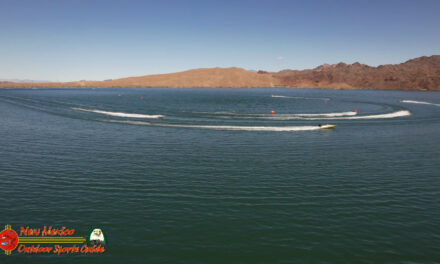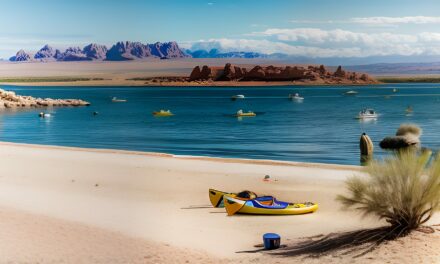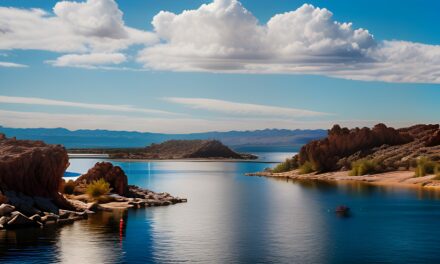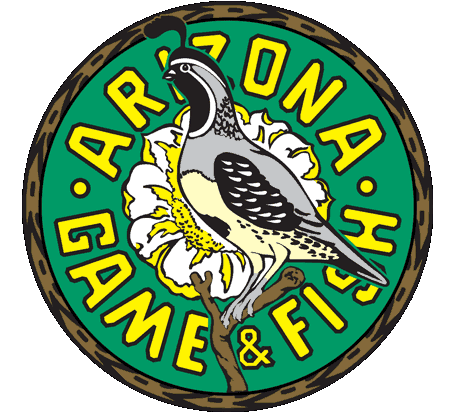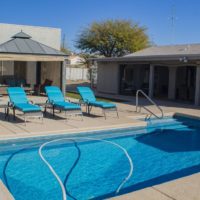Richland Chambers Big Bass – Lake Havasu
Richland Chambers is located about 100 miles SE of Dallas, on I-45 between Corscicana and Fairfield, Texas. We usually have two-three tournaments a year on this impoundment and this year has been yielding some pretty big fish. Our Saturday day of practice game plan was to throw spinnerbaits and buzzbaits at first light, followed by some finesse fishing and maybe a little Carolina rigging in the deeper creek channels. My husband, Norman, cut the hooks off a buzzbait and spinnerbait so that we would not accidentally hook any fish in practice because we might need to catch those fish in Sunday’s tournament.
First light on Saturday morning found us cruising the shallows and throwing the de-hooked baits. Immediately, Norman had several blowups on his buzzbait and I had one on the spinnerbait. We continued down the bank and switched over to “Wacky” style of fishing on spinning gear and Bagley Silver Thread 12-pound line. It wasn’t even 7:30 before Norman connected with what proved to be his biggest bass yet. There were quite a few boats in the area to witness the event and our red and white Boots Follmar Marine Pro Staff 21-foot Skeeter 210 with a 225 Yamaha EFI stands out like a flashing neon sign, and particularly with Norman’s and my rather large size, we can’t hide anyway. The bass was a gorgeous 8.44 pound largemouth that was caught right next to the bank. We got really excited, and naturally, I had to take pictures. As soon as the last photo was shot, she was very gently released back into the still waters to go about her annual ritual. It was time to leave the area as we had already shown our hand.
We went on to the next spot and continued with our game plan. We hadn’t been in the cove more than 15 minutes, when I cast out my little “Wacky” worm rig and backlashed the spinning real something fierce. While picking out the birds nest, I noticed some pressure on my line, and, as we didn’t want to stick any more fish in practice, I just continued to work out my problem. When I finished getting all the kinks out, I reeled in the slack, and darned if that fish still wasn’t on my line. I reeled her in and she was well over three and a half pounds and it wasn’t even 8:30 a.m. Once again, it was time to move. We were fishing on the Richland arm and continued our way up the lake. We made three more stops with no success, lots of looking and very little fishing and decided to go back down the lake. About 2:30, it was decided that we should go check on our main spot.
The area was still packed with boats, several of which were there when Norman caught his big fish earlier, so we went into another cove and Norman immediately caught a seven pound bass on our “Wacky” rig setup. Then we moved back to the area where his biggest fish had been caught. Norman eased over to talk to one of the boats that had been there earlier to see if they had done any good after we left. Robert Branch was fishing with his eleven year old son, Miles, who had earlier landed an 8.99 beauty. They were fishing in the Halliburton Employees Bass Club tournament (a HONEY HOLE Affiliated Bass Club) and young Miles was socking it to dear old dad! Miles caught his fish on a Chartreuse Super Fluke on spinning gear, and of course, it was his biggest fish ever! According to dad, Miles was very adept at running the trolling motor, backing the trailer, catching good quality fish on his own, and had made a really good partner. Young Miles is an accomplished angler and practices catch and release with his dad on a regular basis. Unfortunately, his big fish did not survive, which was quite upsetting to Miles. That did it, we were excited, pumped and ready for our tournament day!
As the luck of the draw would have it, we drew a high boat number, which meant we were one of the last ten boats out Sunday morning. By the time we got to our primary spot, it was covered with tournament boats. There were two couple’s tournaments going on, besides ours, there was the 2 of Us Couples tournament, sponsored by Skeeter Boats. Most all of the boats in the cove were tournament boats. Norman was quite disgusted and decided we would fish down from them and then work our way into the area holding bigger fish. Norman is quite accomplished at sight fishing and most of the fish we saw were on beds, although it did not appear as if any had actually spawned yet. It’s a good thing he really excels this time of year, because he caught all fourteen+ pounds of fish. Although we were not able to work our primary area, through his skill alone, Norman pulled it out of the fire and managed to get our team in 11th place for the tournament. All I could do was net his fish! All in all, we were quite pleased with our tournament results,
Norman’s biggest bass ever (even if it was on Saturday), and to see 11-year-old Miles Branch with a huge Richland Chambers bass was certainly exciting!
– Lake Havasu

